This past summer I have done more plein air paintings than previously in the past.
This current painting of theSt-Romuald church in Farnham Québec is rich in history as well as filled with memories of my childhood.
My summer vacation in September always includes our trip to Saratoga Springs NY and ends with a visit with my family in Farnham Québec that is part of the Brome-Missisquoi County in the Eastern Townships of Québec.
Farnham (established in 1876) is a small town with a population of approximately 8,600 bordering the Yamaska River that has kept its Loyalist character and attractive downtown area. Farnham is an active commercial and industrial centre located in a prosperous agricultural region. An unusual aspect is the nearby presence of a large National Defence base, which trains the Canadian military. Regarded as a major cycling link between Saint-Jean-sur-Richelieu and Granby via the Montérégie 1 and 2 bike trails. A heritage route is also part of the tourism offer.
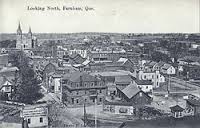
This summer while staying with one of my sisters Linda I decided to do some plein air painting and asked if she would tag along. We gathered up my supplies and set up in the park across the river of the St. Romuald Church.
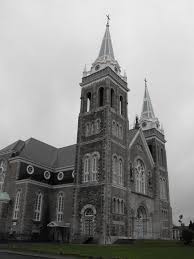
A first brick chapel was begun on the site in October 1849; It is immediately destroyed by a storm. A new wooden chapel, to be served temporarily, replaces it at once; It is finally used for 15 years. During the year 1850, Catholics bought a land adjacent to that of the chapel and built a presbytery there. The parish of Saint-Romuald was founded canonically in 1851. The first church was not completed until 1866. The same year, a new curial house, larger and more comfortable, replaces the previous one. The church was destroyed by a fire in 1901. The present place of worship was erected from 1903 to 1905 in the same place. In 1930, the presbytery was replaced by the present curial house, which was even more spacious and better suited to the needs of the parish. In 1942, a monument of Christ, the work of the Hungarian sculptor Bela Zoltvany (1892-1956), is erected on the front of the factory grounds. The institutional ensemble of Saint-Romuald recalls the evolution of the religious core according to the needs of the parish.
The heritage value of the Saint-Romuald institutional complex is also based on its architectural interest. The buildings which compose it testify to currents marking the religious architecture of Quebec in the first third of the twentieth century. The church of Saint-Romuald was designed by the Montreal architect Joseph-Ovide Turgeon (1875-1933). The latter carries out plans for several Catholic places of worship in Quebec, including the church of Notre-Dame-des-Sept-Allégresses, in Trois-Rivières, and the church of Saint-Édouard in Montreal. For the church of Saint-Romuald, Turgeon is inspired by the Neoromanic style. It draws its forms from medieval architecture, mainly in the religious buildings of the eleventh and twelfth centuries in France and Italy. The style is reflected in massive volumes, sober ornamentation, marked horizontality as well as wide openings, usually arched and frequently grouped. The church of Farnham is characterized by its imposing towers-bell-towers, its smooth stone bands, its arched portals and its wide windows.
The architects René Richer and Lucien Sarra-Bournet design a building, whose elaborate ornamentation is inspired mainly by classical vocabulary. The curial house has corner chains, banners, decorative keys and a gallery with twin columns. The church and the presbytery of Saint-Romuald, which present the same materials and the same imposing aspect, form a homogeneous whole. The heritage value of the institutional complex of Saint-Romuald is also based on its landscape interest. The site is located on open land planted with mature trees and offers a view of the Yamaska River. The monument of Christ, erected in front of the church and the presbytery on a small piece of greenery, is surrounded by trees and shrubs. The careful planning of the site and its location in the heart of the locality contribute to make the whole a landmark in the landscape.
This church has seen many weddings and babtisms in my family as well as its share of funerals. I knew of the daunting task ahead of me once I sat in front of my easel and looked at the imposing and majestic structure.

I started by painting the entire canvas with a mix of prussian and cerulean blue and white.
I then proceeded in outlining the bell towers as my focal point and slowly worked on getting the proper angle and perspective. A few people stopped by while walking through the park and were surprisingly impressed on seeing someone paint on site. Something, I was told was not a common occurrence.
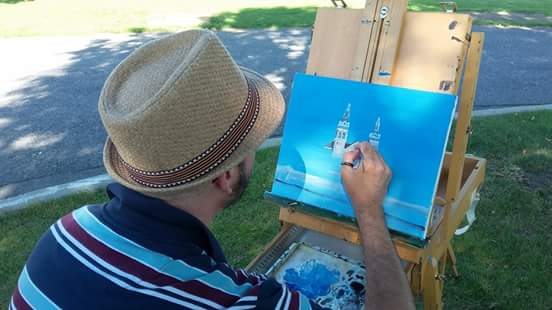
As the afternoon started to wind down I took some pictures so that I could later finish it in my studio.
That evening, as my sister and brother in-law went to their weekly bowling night I stayed behind to continue the painting using the pictures I had taken with my phone as reference. My niece Valérie, Linda’s daughter stayed with me while I painted. She was impressed on the progress that was taking place in front of her eyes.
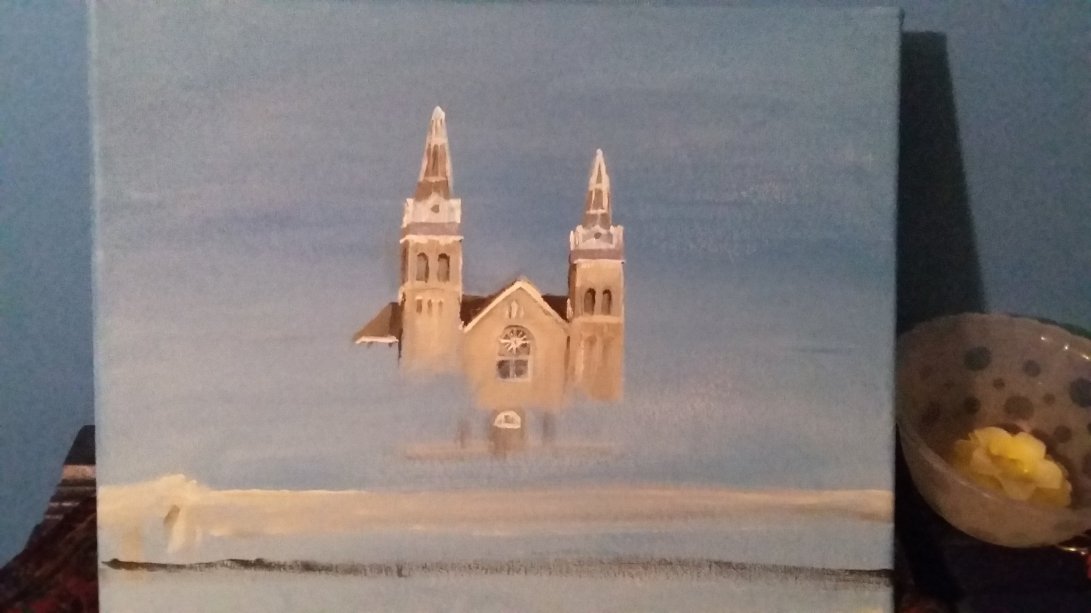

I tried to get as much detail of the bell towers as much as I could and stopped and would not continue until after I had returned home. Not knowing that it would be in December as my having my operation in November.
Although not feeling 100% I had to keep my mind off of the discomfort by immersing myself in my painting and finally decided to tackle the church.
I painted the river and add the structures on either side of the church. Although I knew I could not get more detail out of the pictures I had taken I knew that once I added the trees the entire painting would come along.
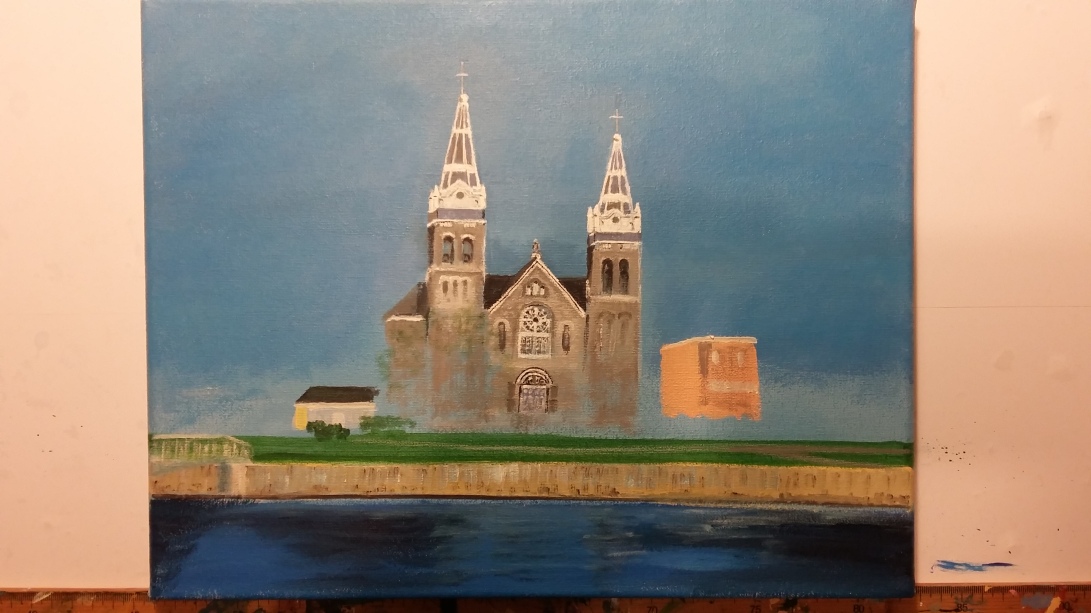
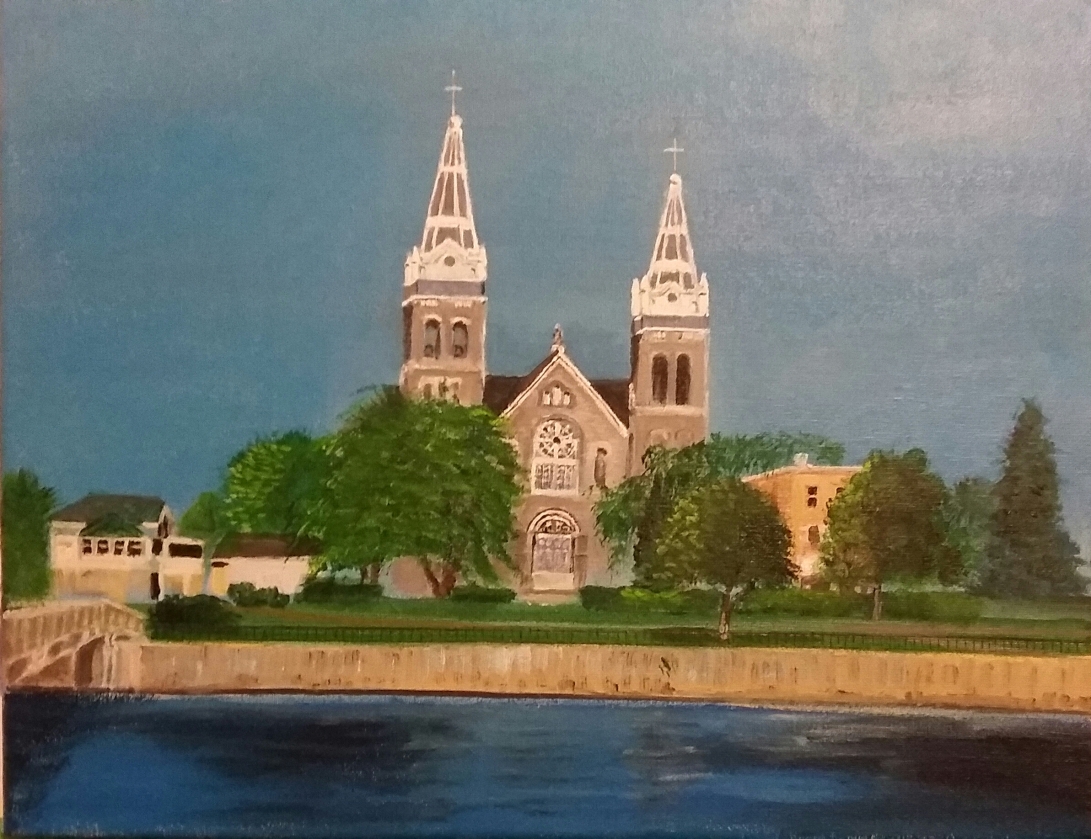
Once some of the trees were done I decided to add clouds (as it is a signature of my paintings) even though there were no clouds that day.
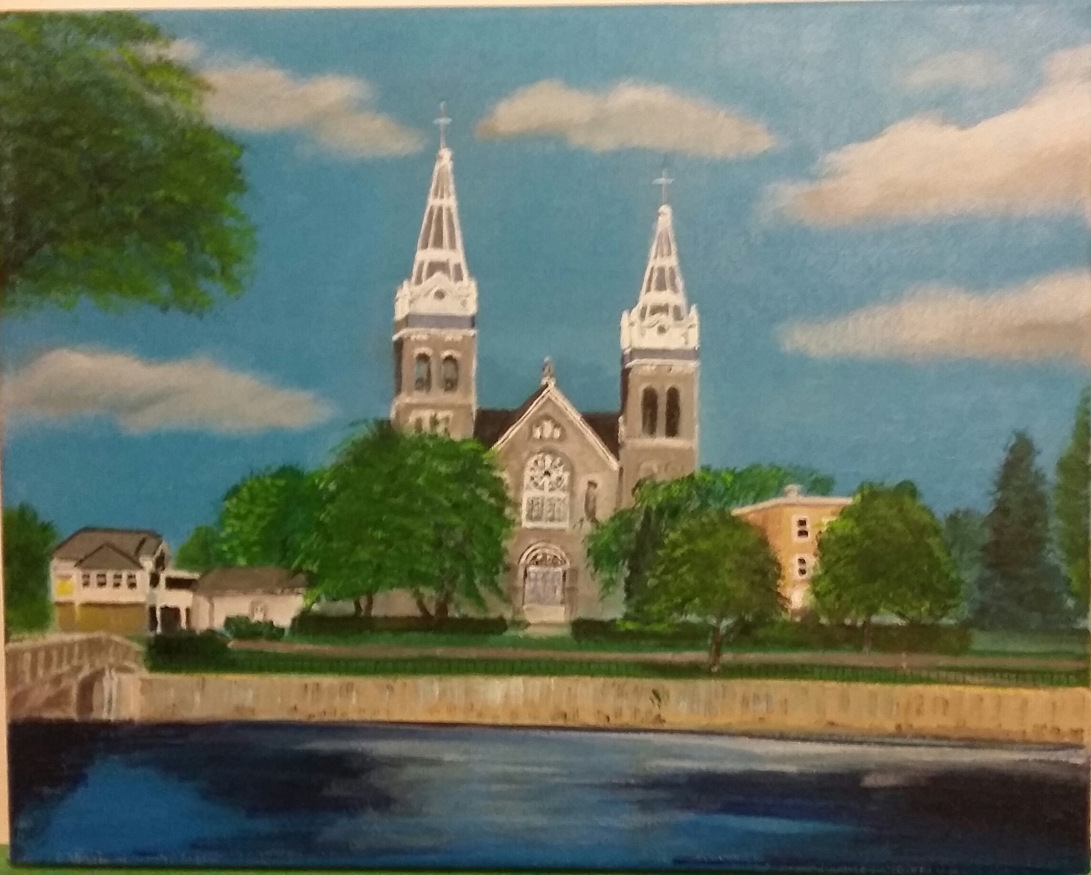
Once the most of the final touches were done I had to decide wether I was going to add the fence in front of the river. It’s at a point like this in a painting that when adding something it either works or it doesn’t. So, I added it and I am glad I did.
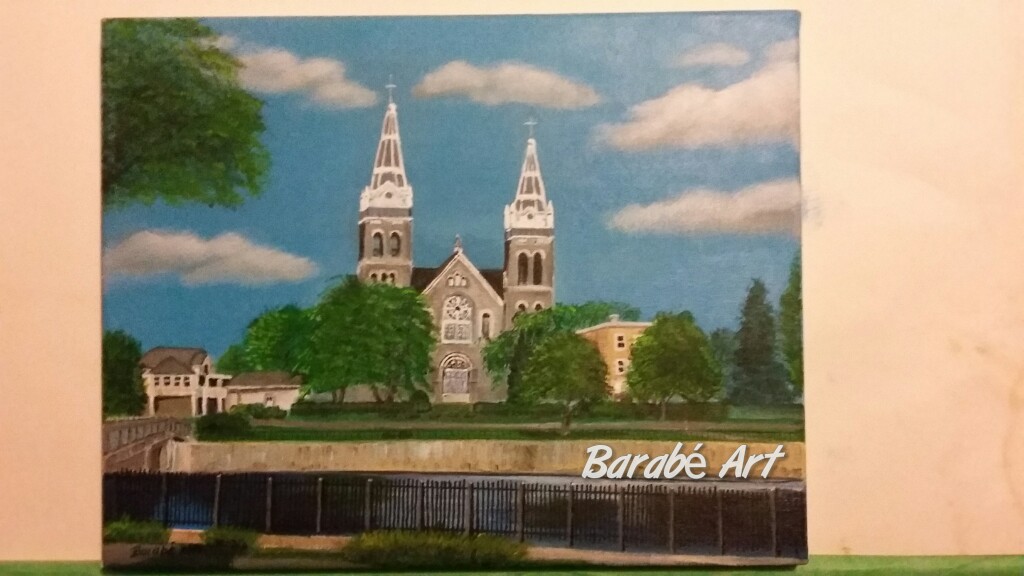
I hope you enjoyed this segment of Anatomy of a Painting as much as I did.
Take Care,
Fabien
